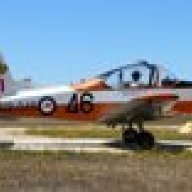Hi Craig,
1 passenger only as per RA-Aus regs...given aircraft limitation on 2 seats only...and one should probably contain a pilot. PAX endorsement is normally a one hour lesson (give or take), essentially the focus is on ensuring your passenger is familiar with the operation of doors, seat belts etc., made aware of controls and not to interfere with them etc.
Regarding the cross country endorsement, once completed you're free to roam the country as you please...well, outside controlled airspace at least...until you get that endorsement.
On the conversion / progression to PPL, there's a few other threads where this has been covered but it essentially involves an aircraft endorsement (for single engine aeroplane up to 5700KG - normally something like a C172, Warrior). All hours you have accumulated in RA aircraft count towards the "minimum hours" requirements for PPL. Other things you'll do for PPL are nav flights as RA-Aus Cross Country endorsement is not recognised (well wasn't when I did my conversion) as well as controlled airspace plus PPL theory exams.
On instructing - the two are mutually exlusive. A GA instructor requires CPL+Instructor Rating, an RA-Aus instructor requires an RA-Aus Instructor Rating.
Hopefully that about covers most of it. If not, as mentioned there are a few threads where most of this has been discussed before.
Cheers,
Matt



